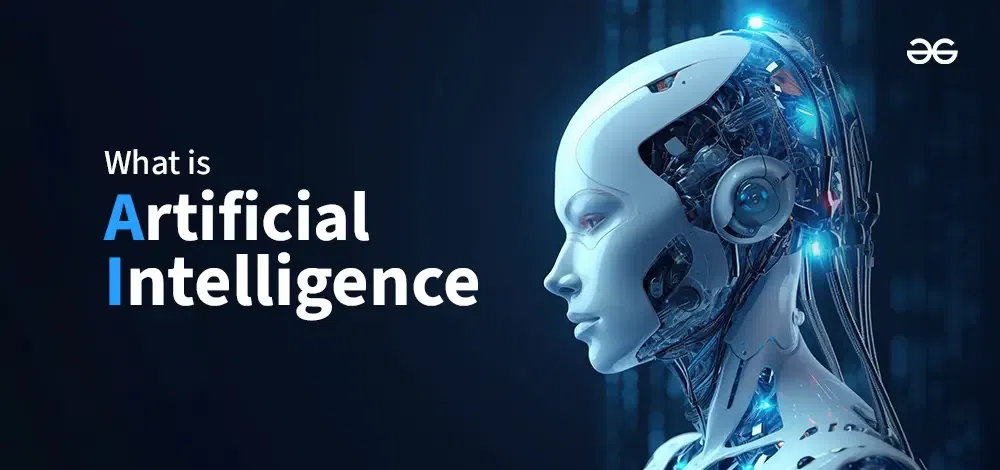Ai Power Solution A New Era Dawns as AI Unlocks Unprecedented Efficiency and Sustainability in the Global Energy Landscape.

rgence of Artificial Intelligence (AI) and power solutions is no longer a futuristic concept but a present-day reality driving efficiency, sustainability, and resilience. While the term AI Power Solution can broadly refer to any innovative application of AI in the energy sector, it also specifically designates a company, Ai Power Solution, incorporated recently in the UK, signaling the growing formalization and commercialization of this critical technological frontier.
This article will explore the transformative impact of AI on the power sector, highlighting the key areas where it is revolutionizing energy management, production, and consumption. We will delve into the broader trends and innovations, while also acknowledging the emergence of specialized entities like AI POWER SOLUTIONS LIMITED at the forefront of this revolution.
The Dawn of AI in Energy A Paradigm Shift
The energy sector, traditionally characterized by large, centralized infrastructure and often slow-to-adapt processes, is undergoing a profound transformation. The rise of renewable energy sources, the increasing complexity of grid management, and the imperative for sustainability have created an urgent need for smarter, more agile solutions. This is where AI steps in, offering unprecedented capabilities to analyze vast datasets, predict patterns, optimize operations, and automate complex tasks.
AI’s potential in the energy sector is immense, with reports suggesting it could help reduce 5% to 10% of global greenhouse gas (GHG) emissions by 2030, equivalent to billions of tons of CO2e. This is achieved through various applications, from enhancing energy efficiency in buildings and industries to optimizing renewable energy integration and improving grid stability.
Key Areas Where AI is Powering the Future
The application of AI in power solutions spans the entire energy value chain, from generation to consumption:
1. Enhanced Energy Production and Forecasting For renewable energy sources like solar and wind, intermittency has always been a challenge. AI is fundamentally changing this by providing highly accurate forecasting models. By analyzing real-time weather data, historical generation patterns, and grid conditions, AI algorithms can predict energy output with remarkable precision. This allows grid operators to better balance supply and demand, maximize the utilization of renewables, and reduce reliance on fossil fuel backups. Companies like Google DeepMind’s WeatherNext are demonstrating how AI-powered weather predictions, extended up to 15 days out, can enable energy companies to proactively prepare for disruptions and optimize operations.
2. Smart Grid Management and Optimization The transition to smart grids is crucial for a decentralized and renewable-heavy energy future. AI-powered smart grids can monitor and analyze energy flows in real-time, predict outages, and automatically adjust power distribution to maintain stability. * Demand Response: AI facilitates sophisticated demand response strategies, allowing energy providers to adjust consumption patterns based on real-time data and pricing signals, thereby reducing peak load and optimizing grid efficiency. * Ai Power Solution: AI algorithms can dynamically balance loads across the grid, preventing overloads and ensuring reliable power supply even with fluctuating renewable inputs. * Predictive Maintenance: By analyzing data from sensors on power lines, transformers, and other grid infrastructure, AI can predict potential failures before they occur, enabling proactive maintenance, reducing downtime by up to 70%, and extending asset lifespan. India’s NTPC, for example, is leveraging AI and machine learning to optimize grid management and predict equipment failures.
3. Energy Efficiency and Consumption Optimization AI-driven solutions are significantly reducing energy waste in buildings, industries, and homes. * Building Energy Management Systems (BEMS): AI-powered BEMS can lower electricity usage by 10% to 20% by adjusting heating, cooling, and lighting based on occupancy, weather forecasts, and usage patterns. Schneider Electric’s AI-based HVAC systems in Indian offices have, for instance, reduced energy consumption by 30%. * Industrial Optimization: In industrial settings, AI identifies inefficiencies in production processes, optimizing machinery operations to lower energy consumption without compromising output. This can lead to substantial reductions in energy use, waste, and carbon emissions. * Home Energy Management Systems (HEMS): Companies like Carrier, in collaboration with Google Cloud AI, are developing HEMS that can optimize energy consumption in homes, even leveraging battery-enabled technology to create “virtual power plants” that benefit both homeowners and the grid.
4. Energy Storage Optimization As battery storage plays an increasingly vital role in grid stability, AI is essential for optimizing charging and discharging cycles. AI algorithms analyze energy prices, grid demand, and weather patterns to ensure better utilization of stored energy, minimizing losses, and maximizing cost-effectiveness. This is particularly crucial for integrating intermittent renewables effectively.
5. Carbon Accounting and Emissions Reduction AI is proving invaluable in the fight against climate change by enabling more accurate carbon accounting and emissions reduction strategies. * Emissions Tracking: Companies can use AI to track emissions across their supply chains more accurately and suggest reduction pathways. * Carbon Credit Verification: AI, satellite imagery, and drone data can verify carbon offset projects, like reforestation, reducing fraud and ensuring these nature-based solutions deliver real climate benefits. Veritree, a Canadian startup, is a prime example of combining AI with geospatial technology and blockchain for transparent reforestation projects. * Methane Emission Detection: Advanced computing capabilities, potentially aided by AI, can help detect methane emissions from oil and gas sectors, supporting efforts to minimize these potent greenhouse gases.
Ai Power Solution A New Player in a Growing Field
In this dynamic environment, the incorporation of Ai Power Solution in the UK on August 5, 2024, signals the formal emergence of specialized entities focused on delivering AI-driven energy solutions. While specific details about their projects and current impact are not yet widely publicized, their nature of business (SIC 43210 – Electrical installation) suggests a focus on the practical implementation and integration of these advanced technologies into existing or new electrical infrastructure.
As a private limited company, Ai Power Solution, with its registered office in Grays, England, is positioned to contribute to the UK’s and potentially international efforts in smart energy. Their establishment underscores the increasing demand for specialized expertise in deploying AI to optimize power systems. Their future success will likely hinge on their ability to:
- Develop and deploy cutting-edge AI algorithms tailored for energy applications.
- Integrate these solutions seamlessly with existing energy infrastructure.
- Demonstrate tangible cost savings and efficiency gains for their clients.
- Contribute to a more sustainable and resilient energy future.
The Challenges and the Path Forward
Despite the immense promise, the widespread adoption of AI in power solutions faces several challenges:
- Data Availability and Quality: AI models require vast amounts of high-quality data. Ensuring data privacy, security, and interoperability across different energy systems is crucial.
- Energy Footprint of AI Itself: The training and operation of complex AI models consume significant energy. This presents a dual challenge: using AI to reduce energy consumption while also developing more energy-efficient AI. Companies like Nvidia are addressing this with more efficient GPUs, and IBM is working on power-capping hardware and smaller, more efficient AI models.
- Integration Complexity: Integrating new AI solutions with legacy energy infrastructure can be complex and costly.
- Skills Gap: A shortage of professionals with expertise in both AI and energy systems can hinder deployment.
- Regulatory Frameworks: Developing appropriate regulatory frameworks to govern AI in critical infrastructure like energy is essential.
However, the industry is actively addressing these challenges. Collaborations between tech giants (like Google, Microsoft, IBM) and energy sector leaders (like Schneider Electric, NTPC, Tata Power) are accelerating innovation. Investments in AI-related infrastructure are surging, with companies like Google planning significant capital expenditures.
The Future is AI-Powered Energy
The trajectory is clear: AI will continue to be a pivotal force in shaping the future of energy. Key trends to watch include:
- Increased Decentralization: AI will enable the effective management of distributed energy resources (DERs) like rooftop solar and battery storage, moving towards a more decentralized grid.
- Hyper-Personalized Energy Management: AI will offer more granular control and optimization of energy consumption for individual consumers and small businesses.
- Advanced Material Science: AI will accelerate the discovery of new materials for more efficient solar cells, battery technologies, and other energy solutions.
- Climate Modeling and Prediction: AI will provide even more precise climate forecasts, enabling proactive strategies for adapting to and mitigating climate change impacts.
- Ethical AI and Responsible Deployment: As AI becomes more embedded in critical infrastructure, ensuring its trustworthiness, transparency, and ethical use will be paramount.
In conclusion, the emergence of entities like Ai Power Solution is a strong indicator of the growing commercial ecosystem around AI in energy. Their specialized focus, combined with the broader technological advancements from industry leaders, promises a future where power is not just supplied, but intelligently managed, efficiently utilized, and sustainably generated. The “AI Power Solution” is not just about technology; it’s about building a more resilient, sustainable, and intelligent energy future for all.









